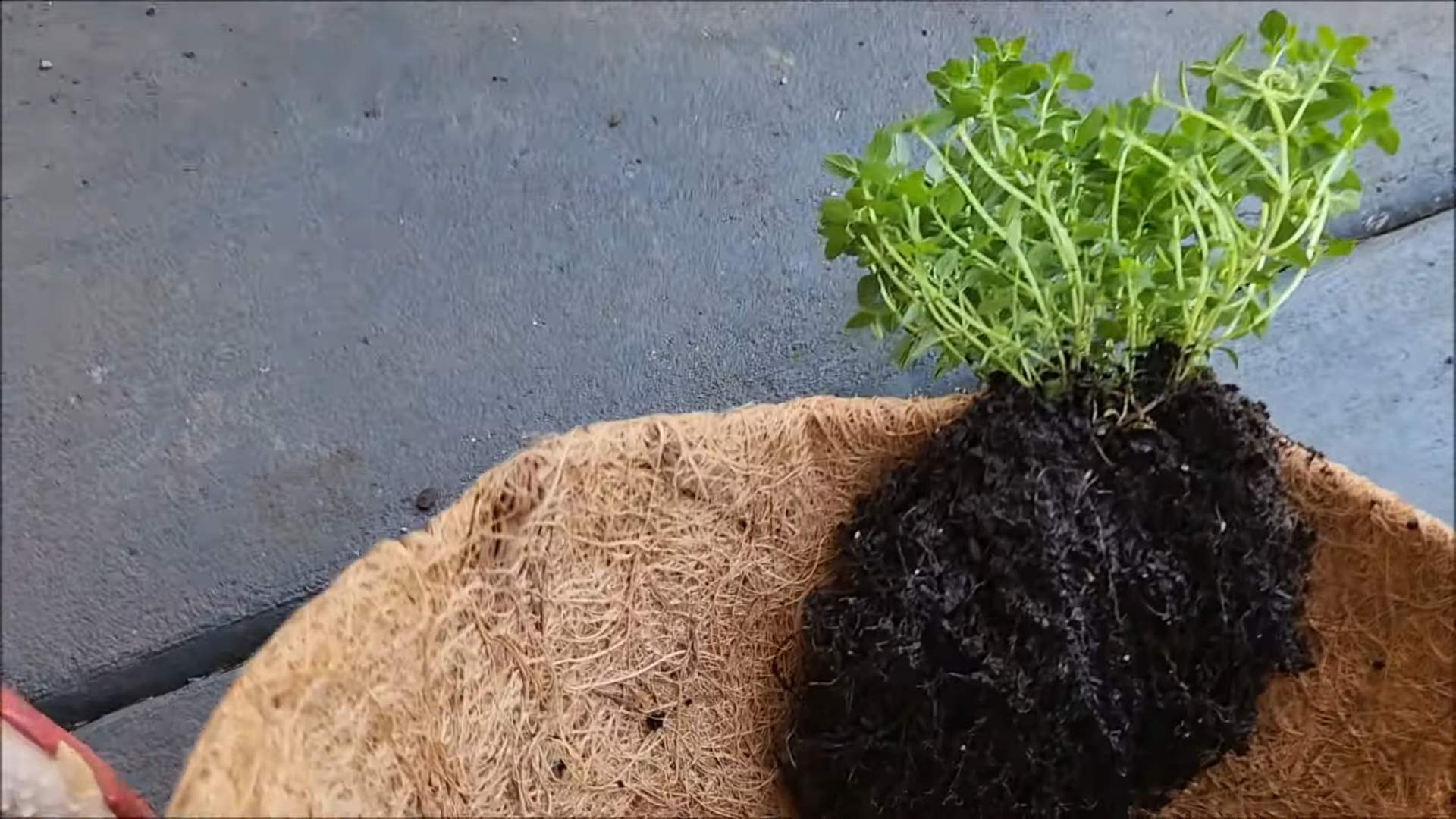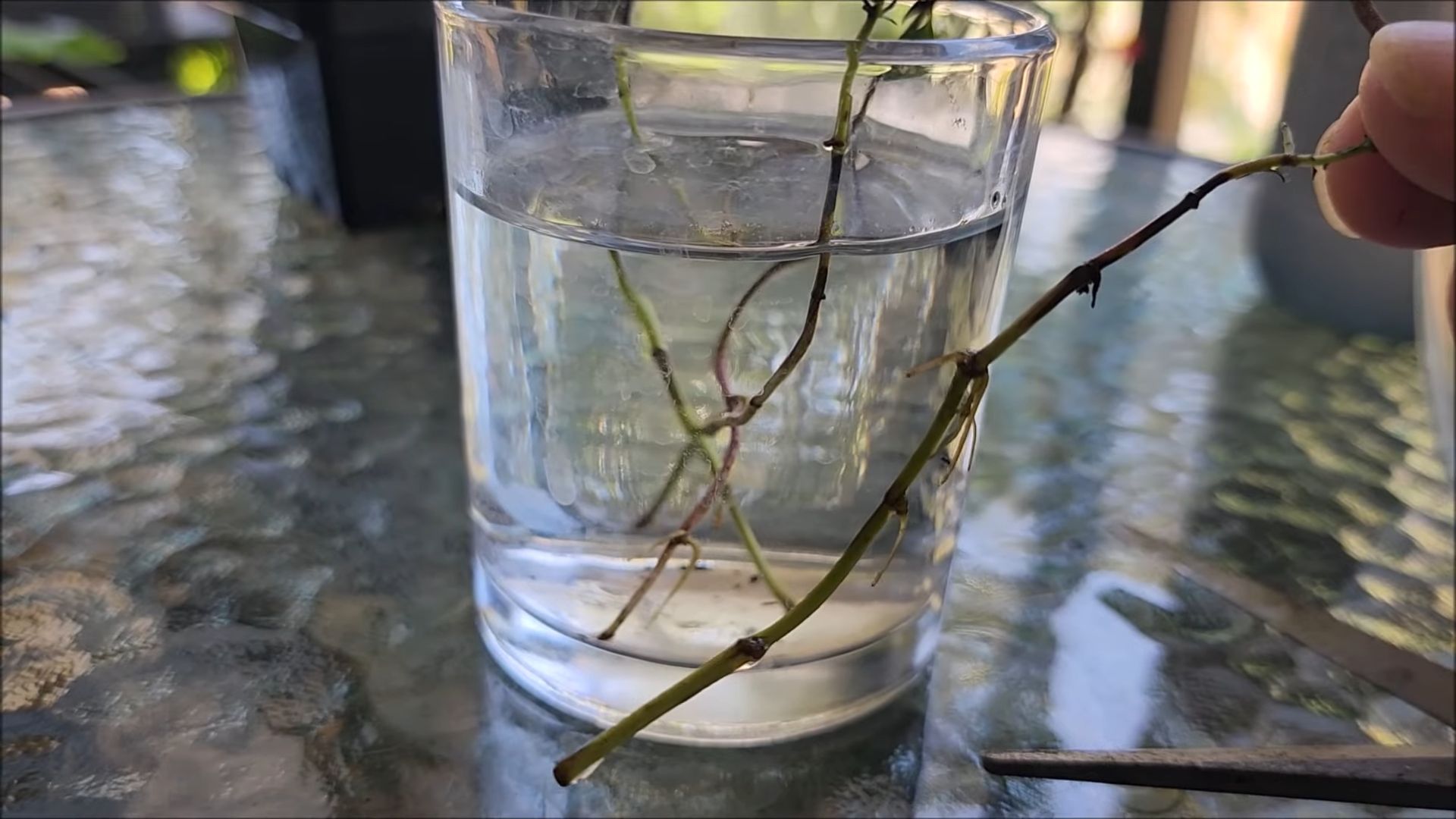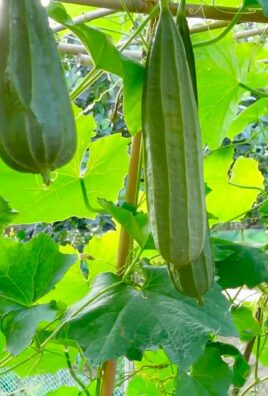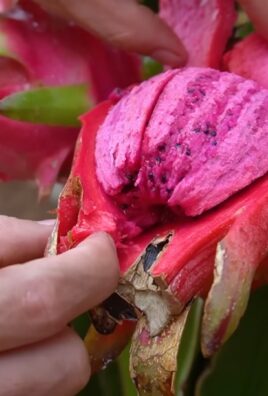Growing Thyme Indoors can feel like a secret superpower, transforming your kitchen into a fragrant herb garden, even if you don’t have a sprawling backyard. Have you ever dreamt of snipping fresh thyme for your favorite recipes, right when you need it? Imagine the burst of flavor, the delightful aroma filling your home – it’s a culinary game-changer!
Thyme, with its rich history dating back to ancient Egypt where it was used for embalming, and later in ancient Greece as incense, has always been valued for its medicinal and aromatic properties. Today, we’re not embalming pharaohs (hopefully!), but we can certainly appreciate its culinary magic. But why struggle with supermarket herbs that wilt within days when you can cultivate your own thriving thyme patch indoors?
Let’s face it, buying fresh herbs can be expensive and often wasteful. Plus, the flavor of homegrown thyme is simply unmatched. This DIY guide will equip you with simple, effective tricks to successfully growing thyme indoors, regardless of your experience level. I’ll walk you through everything from choosing the right pot and soil to providing the perfect amount of light and water. Get ready to unlock the secrets to a flourishing indoor thyme garden and elevate your cooking to a whole new level!

Growing Radishes: A Beginner’s Guide to a Zesty Harvest
Hey there, fellow gardening enthusiasts! I’m so excited to share my experience with growing radishes at home. These little root veggies are incredibly easy to cultivate, even if you’re a complete newbie like I was not too long ago. They’re fast-growing, require minimal space, and add a delightful peppery kick to salads and snacks. So, let’s dive in and get our hands dirty!
What You’ll Need
Before we get started, let’s gather our supplies. Here’s a list of everything you’ll need to successfully grow radishes:
* Radish Seeds: Choose your favorite variety! There are tons of options, from classic red globes to long, slender icicle radishes. I personally love the ‘Cherry Belle’ variety for its quick growth and mild flavor.
* Potting Soil: A well-draining potting mix is essential. You can buy a pre-made mix or create your own by combining equal parts garden soil, compost, and perlite.
* Container (Optional): If you’re growing radishes in containers, choose one that’s at least 6 inches deep. Radishes need room to grow downwards. Make sure it has drainage holes!
* Gardening Gloves: Protect your hands from dirt and potential irritants.
* Watering Can or Hose: For gentle and consistent watering.
* Trowel or Small Shovel: For planting and thinning.
* Fertilizer (Optional): A balanced fertilizer can give your radishes a boost, but it’s not strictly necessary. I sometimes use a diluted liquid fertilizer a couple of weeks after planting.
Choosing the Right Location
Radishes thrive in cool weather and need at least 6 hours of sunlight per day. Here’s what to keep in mind when choosing a location:
* Sunlight: Find a spot in your garden or on your balcony that receives plenty of sunlight.
* Soil: Radishes prefer loose, well-drained soil. Avoid heavy clay soil, as it can hinder root development. If your soil is compacted, amend it with compost or other organic matter.
* Temperature: Radishes grow best in temperatures between 50°F and 65°F (10°C and 18°C). They can tolerate slightly warmer temperatures, but they may become more pungent.
* Timing: Radishes are a cool-season crop, so plant them in early spring or late summer/early fall. Avoid planting them during the hottest months of the year.
Planting Your Radish Seeds
Now for the fun part – planting! Follow these steps to ensure a successful start:
1. Prepare the Soil: Whether you’re planting in the ground or in a container, make sure the soil is loose and free of rocks and debris. Rake the soil surface smooth.
2. Sow the Seeds: Radish seeds are small, so be careful not to plant them too deep. Sow the seeds about ½ inch deep and 1 inch apart. If you’re planting in rows, space the rows about 6 inches apart.
3. Cover the Seeds: Gently cover the seeds with soil and lightly pat down the surface.
4. Water Thoroughly: Water the soil gently but thoroughly. The soil should be moist but not waterlogged.
5. Label Your Rows: It’s always a good idea to label your rows with the date and variety of radish you planted. This will help you keep track of your progress.
Caring for Your Radishes
Radishes are relatively low-maintenance, but here are a few things you can do to ensure a bountiful harvest:
1. Water Regularly: Radishes need consistent moisture to grow quickly and develop crisp, flavorful roots. Water them regularly, especially during dry spells. Aim to keep the soil consistently moist, but avoid overwatering, which can lead to rot.
2. Thin Seedlings: Once the seedlings emerge, thin them to about 2 inches apart. This will give the radishes enough space to grow and prevent overcrowding. Use small scissors to snip the unwanted seedlings at the soil line. Don’t pull them out, as this can disturb the roots of the remaining plants.
3. Weed Regularly: Keep the area around your radishes free of weeds. Weeds compete with radishes for nutrients and water. Gently pull weeds by hand, being careful not to disturb the radish roots.
4. Fertilize (Optional): If you want to give your radishes a boost, you can fertilize them with a balanced liquid fertilizer a couple of weeks after planting. Follow the instructions on the fertilizer package. I usually dilute the fertilizer to half strength to avoid burning the plants.
5. Protect from Pests: Radishes are generally pest-resistant, but they can sometimes be attacked by flea beetles or root maggots. Flea beetles chew small holes in the leaves, while root maggots feed on the roots. To prevent flea beetles, you can cover your radishes with row covers. To prevent root maggots, avoid planting radishes in the same spot year after year.
Harvesting Your Radishes
The best part of growing radishes is harvesting them! Radishes are incredibly fast-growing, so you can usually harvest them within 3-4 weeks of planting.
1. Check for Maturity: Radishes are ready to harvest when the roots are about 1 inch in diameter. You can gently brush away the soil around the base of the plant to check the size of the root.
2. Harvest Carefully: To harvest radishes, gently pull them from the soil. If the soil is dry, you may need to loosen it with a trowel first.
3. Wash and Store: Wash the radishes thoroughly and trim off the tops and roots. Store them in a plastic bag in the refrigerator. They should keep for about a week.
Troubleshooting
Even with the best care, you may encounter some problems when growing radishes. Here are a few common issues and how to address them:
* Radishes are too Pungent: This can be caused by hot weather or inconsistent watering. Try planting radishes in a cooler location or providing more consistent moisture.
* Radishes are Small and Woody: This can be caused by overcrowding or poor soil. Thin the seedlings to give them more space and amend the soil with compost.
* Radishes are Cracked: This can be caused by inconsistent watering. Water radishes regularly and evenly.
* Leaves are Eaten: This can be caused by flea beetles. Cover your radishes with row covers to protect them from these pests.
Different Varieties to Try
One of the best things about growing radishes is the variety! Here are a few of my favorite varieties to try:
* Cherry Belle: A classic red globe radish that’s quick-growing and mild-flavored.
* French Breakfast: A long, slender radish with a mild, slightly sweet flavor.
* Icicle: A white, elongated radish with a crisp texture and a slightly spicy flavor.
* Black Spanish: A large, round radish with a black skin and a pungent flavor.
* Watermelon Radish: A beautiful radish with a green skin and a bright pink interior.
Enjoying Your Harvest
Now that you’ve harvested your radishes, it’s time to enjoy them! Here are a few ideas:
* Eat them Raw: Radishes are delicious eaten raw in salads, sandwiches, or as a snack.
* Roast them: Roasting radishes mellows their flavor and brings out their sweetness.
* Pickle them: Pickled radishes are a tangy and flavorful addition to any meal.
* Use the Greens: Don’t throw away the radish greens! They’re edible and can be used in salads, soups, or stir-fries.
Extending Your Harvest
To enjoy a continuous harvest of radishes, sow seeds every 2-3 weeks. This is called succession planting. By planting new seeds regularly, you’ll have a steady supply of fresh radishes throughout the growing season.
Growing Radishes in Containers
If you don’t have a garden, you can still grow radishes in containers. Here’s what you need to know:
* Choose the Right Container: Select a container that’s at least 6 inches deep and has drainage holes.
* Use a Good Potting Mix: Use a well-draining potting mix to ensure that the radishes have enough nutrients and moisture.
* Plant the Seeds: Sow the seeds about ½ inch deep and 1 inch apart.
* Water Regularly: Water the radishes regularly, especially during hot weather.
* Fertilize (Optional): Fertilize the radishes with a balanced liquid fertilizer every few weeks.
Radishes as a Cover Crop
Radishes can also be used as a cover crop

Conclusion
So, there you have it! Growing thyme indoors is not only achievable, it’s downright rewarding. Imagine having fresh, fragrant thyme at your fingertips, ready to elevate your culinary creations any time of year. No more last-minute dashes to the grocery store or settling for dried herbs that lack that vibrant, fresh flavor. This simple DIY trick transforms your kitchen into a miniature herb garden, bringing a touch of the outdoors inside.
But why is this a must-try? Beyond the convenience and superior flavor, growing your own thyme is incredibly satisfying. It connects you to the food you eat, allowing you to nurture something from seed (or cutting) to table. Plus, it’s a sustainable choice, reducing your reliance on commercially grown herbs and minimizing your environmental impact.
This isn’t just about having thyme; it’s about enhancing your lifestyle.
And the possibilities don’t stop there! Feel free to experiment with different varieties of thyme. Lemon thyme adds a citrusy zing to your dishes, while creeping thyme can be used as a fragrant ground cover in small indoor containers. You can even create a mixed herb garden, combining thyme with other easy-to-grow herbs like rosemary, oregano, and chives. Think of the delicious Mediterranean-inspired meals you could create!
Consider using different types of containers to match your décor. Terracotta pots offer excellent drainage, while decorative ceramic pots can add a touch of elegance to your kitchen windowsill. Just remember to ensure adequate drainage regardless of the container you choose.
Don’t be afraid to get creative with your lighting setup. While a sunny windowsill is ideal, you can supplement with grow lights, especially during the darker winter months. This will ensure your thyme receives the light it needs to thrive.
We’ve covered the basics, but the real magic happens when you put these tips into practice. So, grab a pot, some soil, and a thyme plant (or seeds!), and embark on your indoor herb-growing adventure. We are confident that you will find the process enjoyable and the results delicious.
Ready to transform your kitchen into a fragrant oasis?
We encourage you to try this DIY trick for growing thyme indoors and share your experience with us! Let us know what varieties you’re growing, what challenges you’ve encountered, and what delicious dishes you’ve created with your homegrown thyme. Share your photos and tips in the comments below – we can’t wait to see your indoor herb gardens flourish! Happy growing!
Frequently Asked Questions (FAQ)
1. What is the best type of thyme to grow indoors?
The best types of thyme to grow indoors are generally those that are compact and well-suited to container gardening. Common thyme (Thymus vulgaris) is a popular choice due to its robust flavor and ease of cultivation. Lemon thyme (Thymus citriodorus) is another excellent option, offering a delightful citrusy aroma and flavor. Creeping thyme (Thymus serpyllum) can also be grown indoors, although it tends to spread more and may require a larger container. Ultimately, the best type of thyme for you will depend on your personal preferences and the space you have available. Experiment with different varieties to discover your favorites!
2. How much sunlight does indoor thyme need?
Thyme thrives in bright, sunny conditions. Ideally, your indoor thyme plant should receive at least 6-8 hours of direct sunlight per day. A south-facing windowsill is often the best location. If you don’t have access to a sufficiently sunny spot, you can supplement with artificial grow lights. Position the grow lights about 6-12 inches above the plant and keep them on for 12-16 hours per day. Insufficient sunlight can lead to leggy growth and a weaker flavor.
3. What kind of soil is best for growing thyme indoors?
Thyme prefers well-draining soil that is slightly alkaline. A good potting mix for thyme should be light and airy, allowing for good root aeration. You can create your own mix by combining equal parts potting soil, perlite, and coarse sand. Avoid using heavy, clay-based soils, as these can retain too much moisture and lead to root rot. Ensure your container has drainage holes to prevent waterlogging.
4. How often should I water my indoor thyme plant?
Water your thyme plant when the top inch of soil feels dry to the touch. Avoid overwatering, as thyme is susceptible to root rot. Water thoroughly, allowing excess water to drain out of the bottom of the pot. During the winter months, when growth slows down, you may need to water less frequently. Always check the soil moisture before watering to avoid overwatering.
5. How do I harvest thyme from my indoor plant?
You can begin harvesting thyme once the plant is established and has several stems. To harvest, simply snip off the stems with clean scissors or pruning shears. Avoid cutting more than one-third of the plant at a time, as this can stress the plant. Regular harvesting encourages bushier growth. You can use the fresh thyme immediately or dry it for later use. To dry thyme, hang the stems upside down in a cool, dry place or use a dehydrator.
6. How do I propagate thyme indoors?
Thyme can be easily propagated from stem cuttings. Take a 4-6 inch cutting from a healthy stem, removing the lower leaves. Dip the cut end in rooting hormone (optional) and plant it in a pot filled with well-draining potting mix. Keep the soil moist but not soggy, and place the pot in a warm, bright location. Roots should develop within a few weeks. You can also propagate thyme from seeds, but this method takes longer.
7. What are some common problems when growing thyme indoors and how do I fix them?
Some common problems when growing thyme indoors include:
* **Leggy growth:** This is usually caused by insufficient sunlight. Provide more light, either by moving the plant to a sunnier location or using grow lights.
* **Yellowing leaves:** This can be caused by overwatering, underwatering, or nutrient deficiencies. Check the soil moisture and adjust your watering accordingly. Fertilize with a balanced liquid fertilizer diluted to half strength every few weeks.
* **Root rot:** This is caused by overwatering and poor drainage. Ensure your container has drainage holes and use well-draining soil.
* **Pests:** Thyme is generally pest-resistant, but occasionally aphids or spider mites may appear. Treat infestations with insecticidal soap or neem oil.
8. Can I use fertilizer on my indoor thyme plant?
Yes, you can use fertilizer on your indoor thyme plant, but it’s important to use it sparingly. Thyme doesn’t require heavy feeding. A balanced liquid fertilizer diluted to half strength every few weeks during the growing season (spring and summer) is usually sufficient. Avoid over-fertilizing, as this can lead to leggy growth and a weaker flavor.
9. How do I overwinter my indoor thyme plant?
Thyme is a perennial plant, so it can survive the winter indoors. During the winter months, growth will slow down. Reduce watering and fertilization. Keep the plant in a cool, bright location. You may need to supplement with grow lights if natural light is limited. Prune back any dead or damaged growth in the spring.
10. What are some creative ways to use my homegrown thyme?
The possibilities are endless! Use fresh thyme to flavor roasted meats, vegetables, soups, stews, and sauces. Add it to marinades, dressings, and herb butters. Sprinkle it on pizzas, salads, and omelets. Use lemon thyme to infuse teas and cocktails. Dry your thyme and use it in spice blends and rubs. Get creative and experiment with different flavor combinations!




Leave a Comment